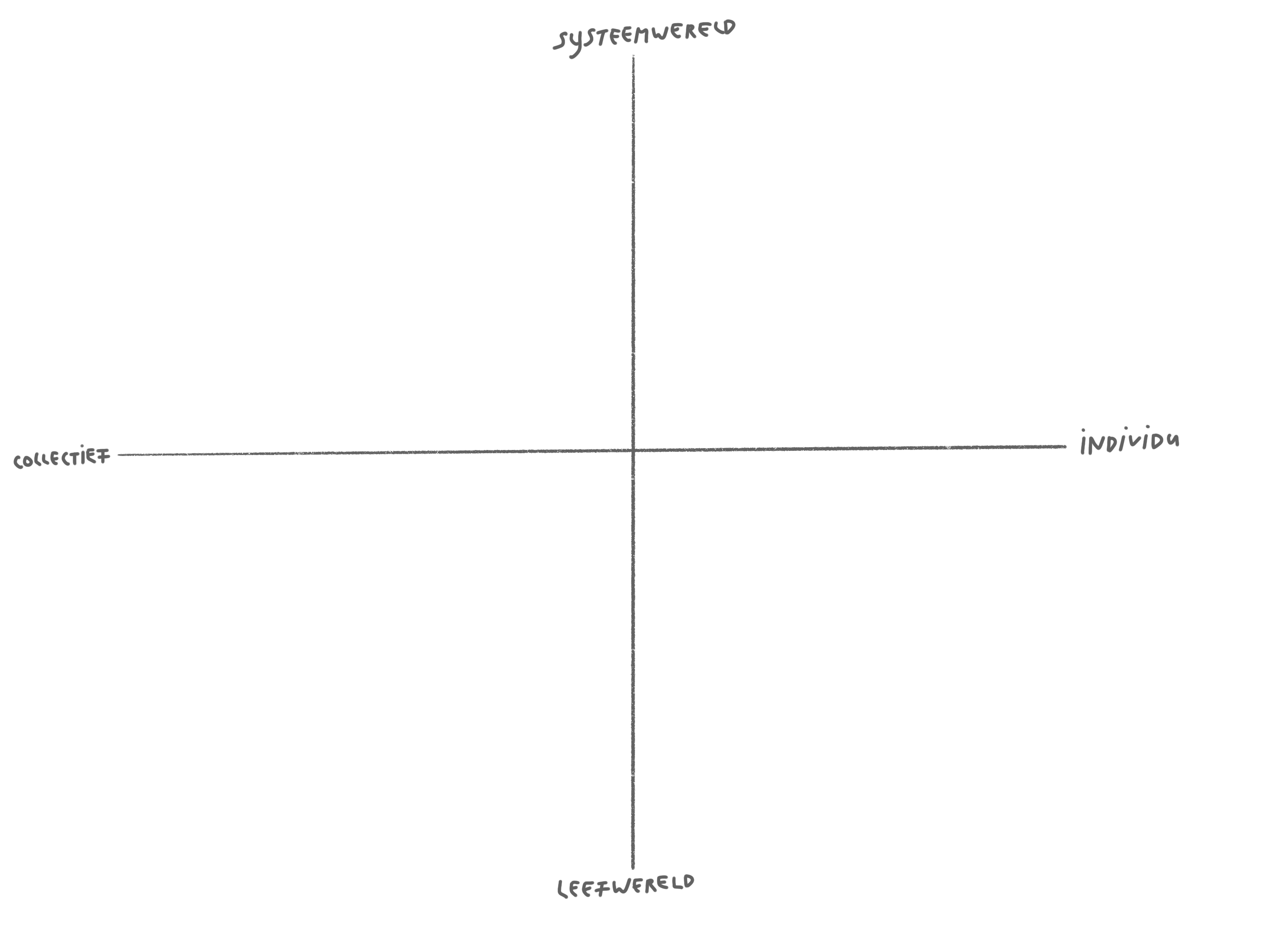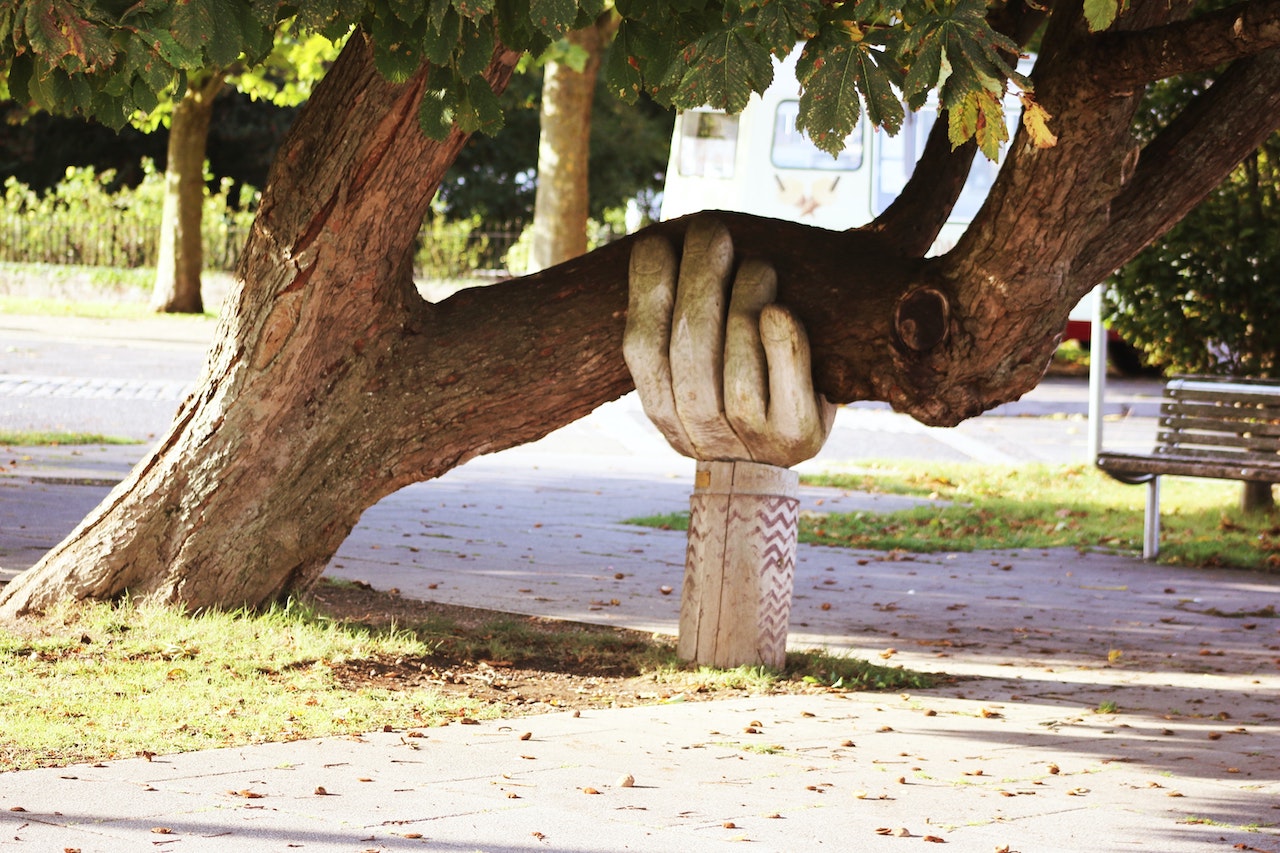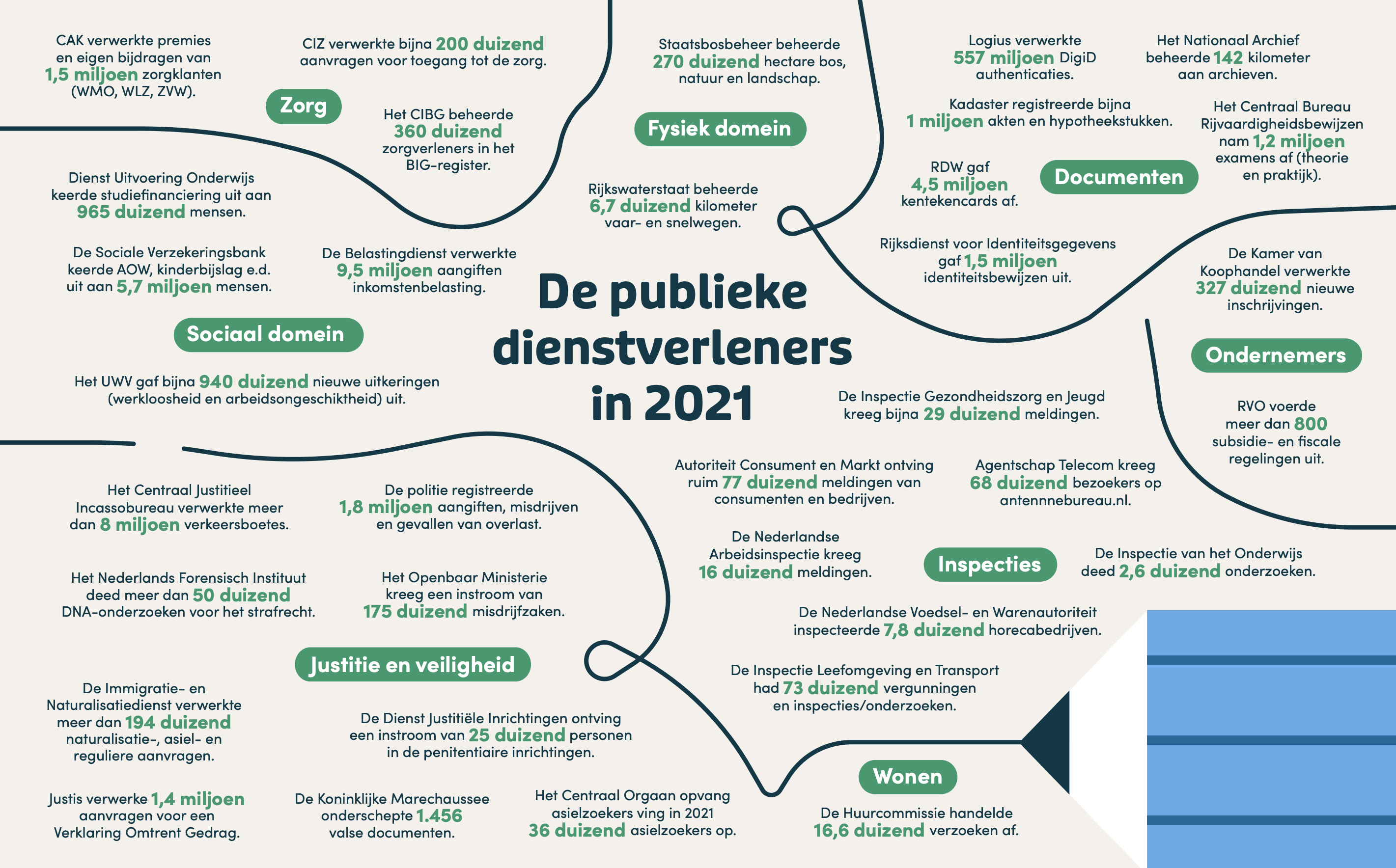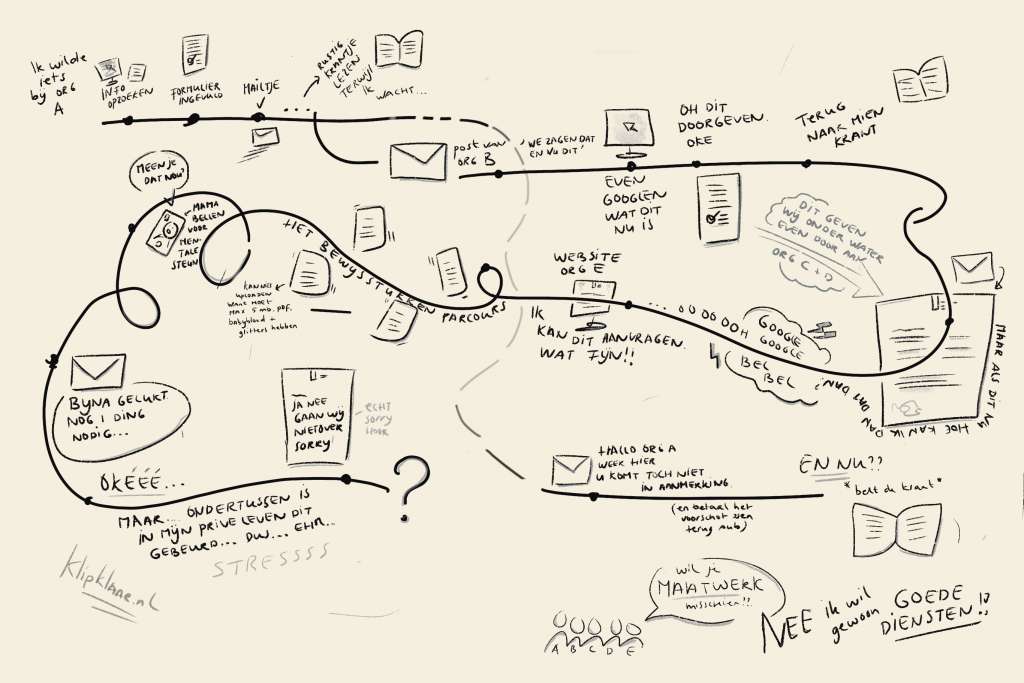Design in government is gaining momentum in the Netherlands. At implementing organizations, there are more and more design teams and at ministries, service and policy designers are increasingly being hired; the Ministry of Justice and Safety has even started a Makers Collective. External agencies have been setting up design projects with and in public organizations for decades, and the Ministry of Education will soon launch a multi-year program to involve designers in social challenges. Finally, let’s not forget how hot “design thinking” is becoming among managers.
Design in government is hot. But what is what really?
What role do designers have in government? Where in the process do you need what type of design? What does the context of government look like and how does a design approach fit into it? In this blog, a start to form my point of view. To give some insight into what the area looks like, a map to help us have a conversation and explain when we make what contribution. But also maybe as a bit of a provocation, because nothing is more fun than discussing design with designers, ha!
Evolution of the map
The map I see before me does not come out of the blue. In the archives of my blog are all kinds of building blocks and thinking steps I made over the years that led to this map. I’ll explain.
I started an experiment in 2018 in Rotterdam with a yellow rope. I stood on one side, as the government, and asked passersby how they wanted to be connected to me. A simple relationship between two parties.

I built this into a multi-party role-play. I asked students to take position with their classmates, teacher and staff of the Executive Agency of Education (DUO): what role do they themselves, their friends, parents, school, DUO and politics have in the way they deal with student loans. The relationship was no longer a simple dyad.
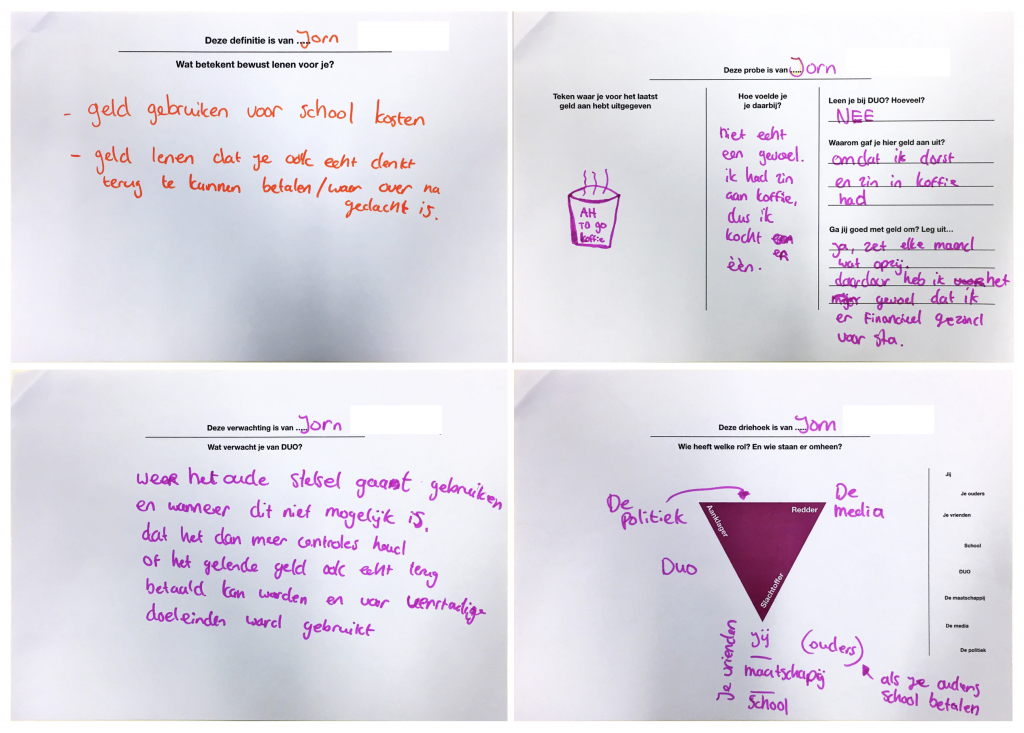
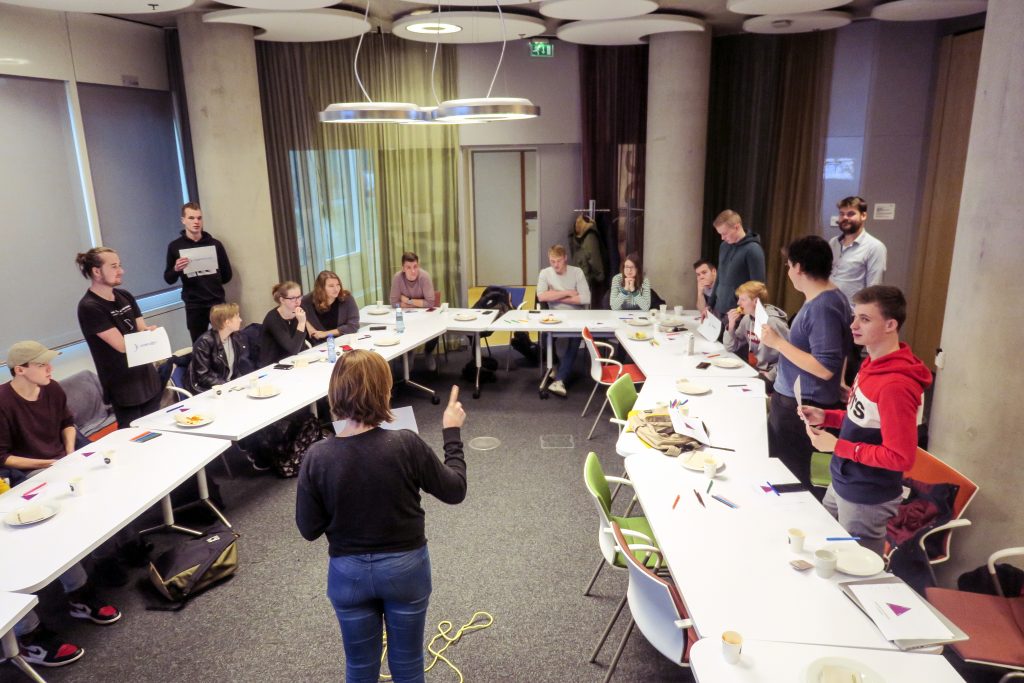
DUO employees who participated in the experiments all took different positions. That confused me, which made me want to know what role empathy for citizens had for them, in the path from law to counter. I started with this blog and photo-interviewed colleagues to map out the steps. The result: the law-to-counter relay on Debegripvolleambtenaar.nl. I placed the relay in the context of the democratic cycle.
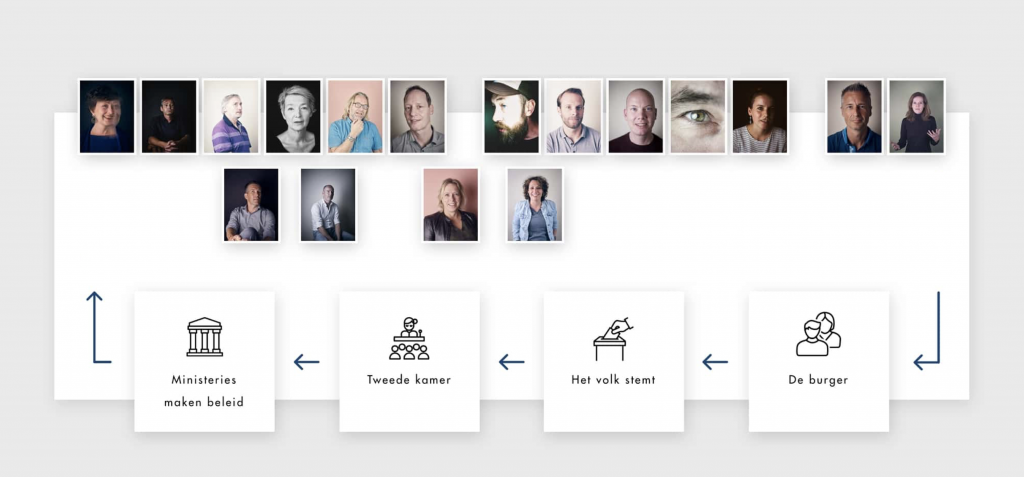
I elaborated further by surveying a month of my own relationship and figuring out how the side of the government was organized, including the making of policies, laws and the collective values underneath. I began my doctoral research with this timeline in this blog.
On that timeline, I often got feedback that the bottom and the top were also connected. And that I missed the whole civil society. When I worked at the National Ombudsman, I learned more about the part where citizens have a say and (want to) influence how we organize society from the view point of their lifeworld. For example, by looking into participation in Groningen for the reinforcement of houses.
The maps and experiments weren’t quite it yet.
So I made a new map
Over the past few weeks, I talked to several people about it including Prof. Mark Bovens of Utrecht University’s Faculty of Public Administration to check if I was on the right path. With the feedback, I adjusted the map.
The map consists of two axes. The horizontal axis has the collective on the left and the individual on the right. The vertical axis has above the system world versus below the lifeworld.
This gives us 4 quadrants, and I’ll go through them with you one by one.
System world / collective
Parlement, together with the Cabinet, devises how society should be. Collective values are enshrined in laws and translated into interventions to realize the collective values (enshrined in policies).
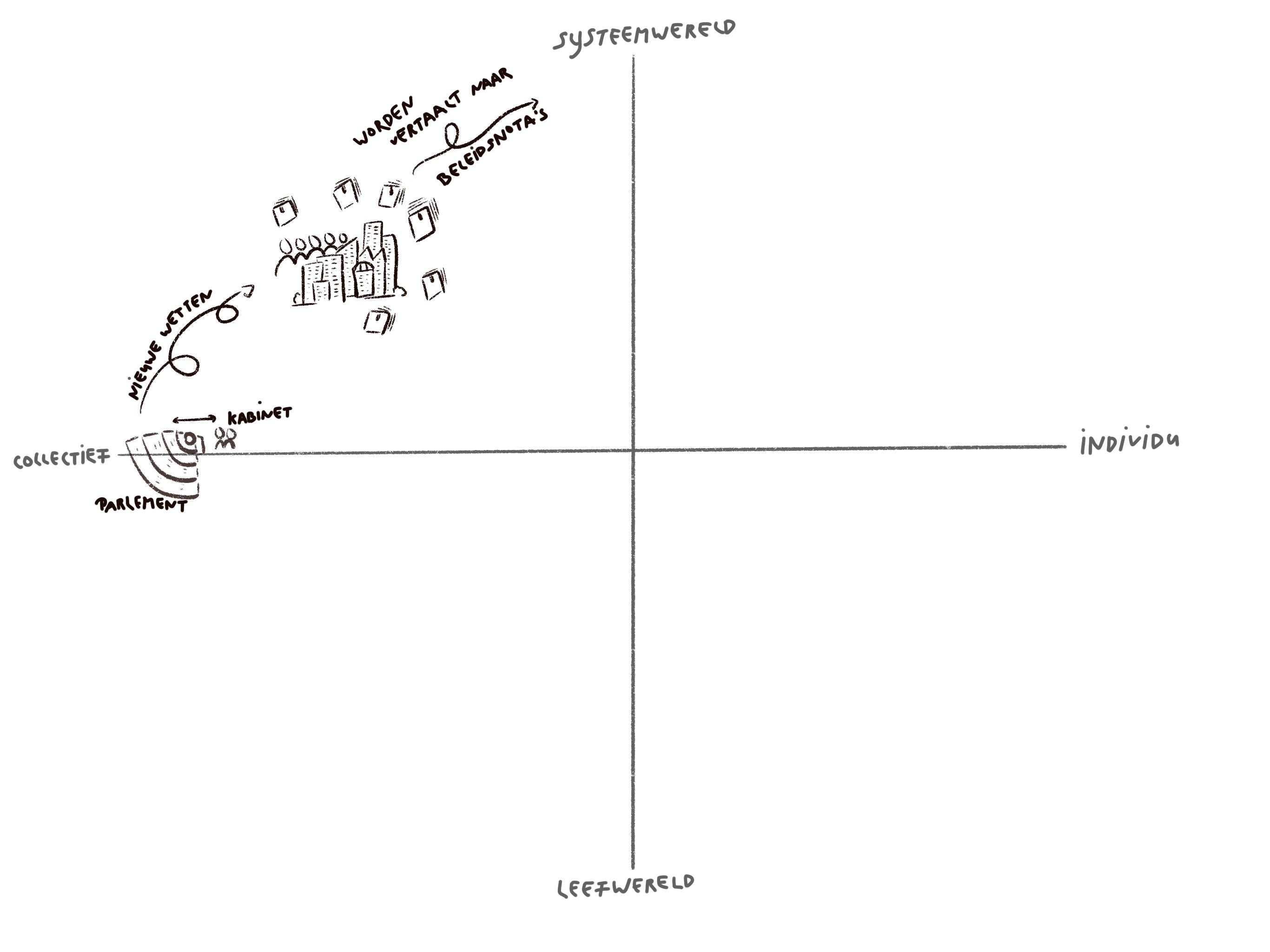
System world / Individual
Those interventions are implemented and embedded in existing processes and services, by government executive organizations and/or private service providers. For example: the student finance is transferred, the hybrid heat pump installed, as well as the trains that are running. Much of this goes automated or is supported by digital processes, hence the softly buzzing data center.
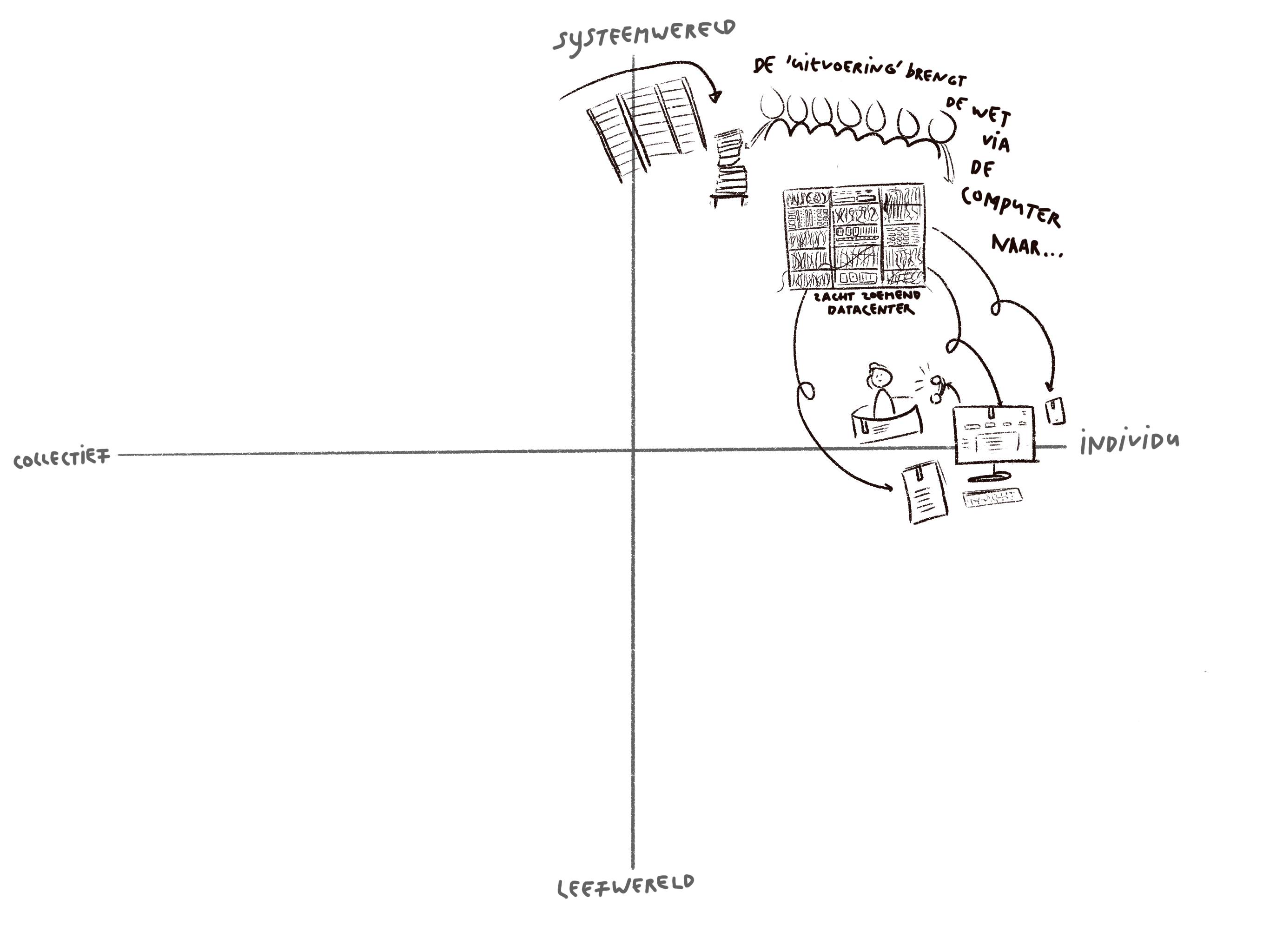
Living world / Individual
Such a service does not stand alone but happens in context. I am applying for a grant for a heat pump for my house where I live with Jasper on a street with neighbors. I have family, friends, I am in a certain stage of life. This all affects the interaction and what else I need, in this case, to make my home more sustainable.
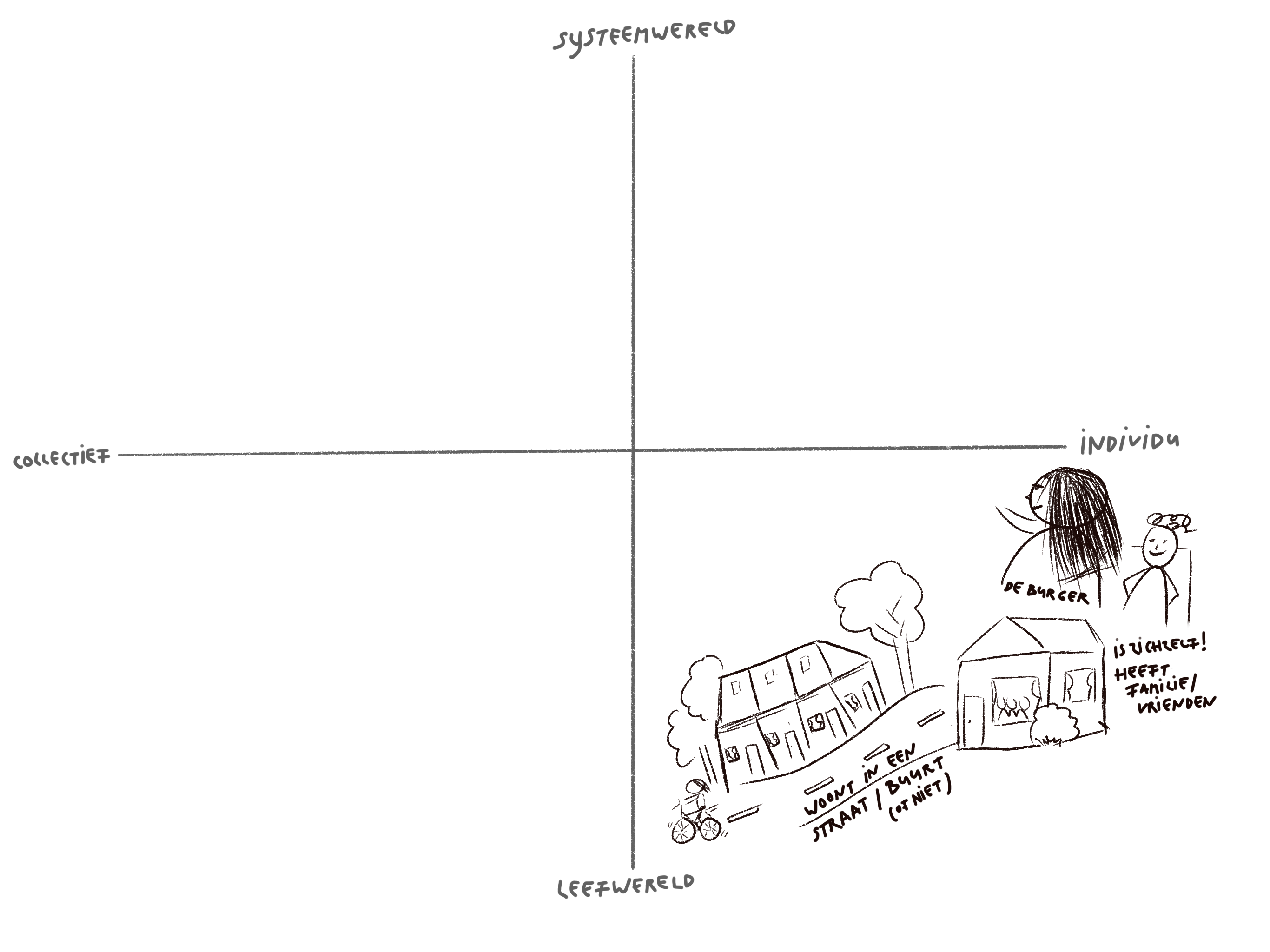
Living world / collective
Individuals unite. In a sports club or neighborhood association to make your neighborhood finer. People seek each other out around an issue and work together to influence and have a say in how we live together as a collective. Civil society, as well as political parties that run for election to represent the people in democracy.
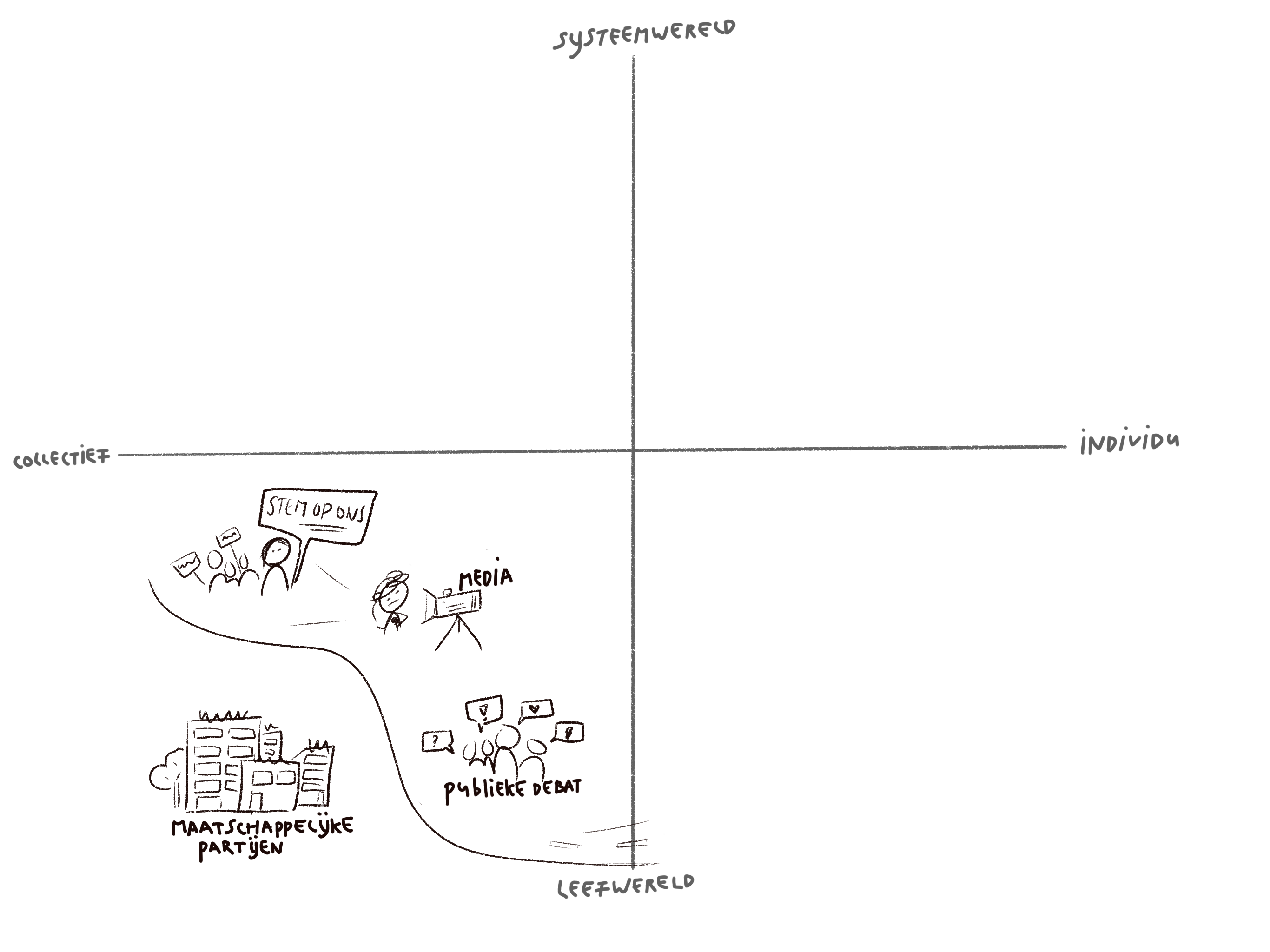
Those are the four quadrants.
The whole map looks like this. Pay particular attention to when it moves from one quadrant to another. Interesting things usually happen there.

Then the design field
Although designers have a shared way of working and mindset, we do not all work on the same things and our approaches are often different. Where you are on the map, the issues are different, your design outcome is different, and so your role and approach may be too.
I sketch my own position on the map…
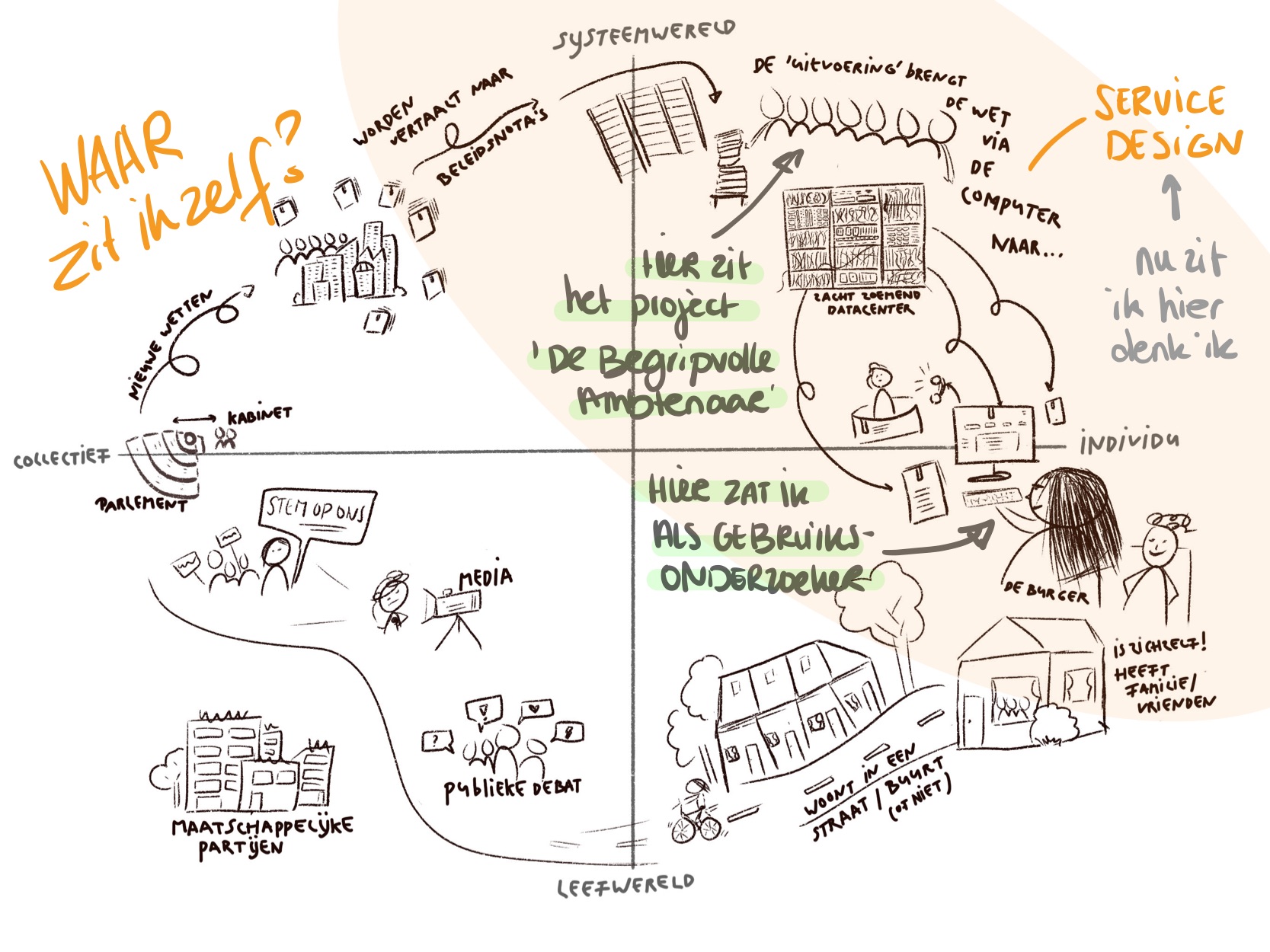
You see: I spent most of my time in the system-world/individual quadrant.
I first was as a user researcher on the overlap between system world and lifeworld, with the individual. I observed as students used duo.nl. Later, on the project The Compassionate Civil Servant, I walked deep into the caverns of the system world. And at the Legitimate I dove into that buzzing computer.
Richard Buchanan (1992) in his “four orders of design” describes the difference between, for example, user interface design and service design. The latter is much more holistic. So now, with my current research on government services, I am going to zoom out and want to touch more of the other quadrants as well.
And then the provocate bit: maybe you can plot other design disciplines this way as well.
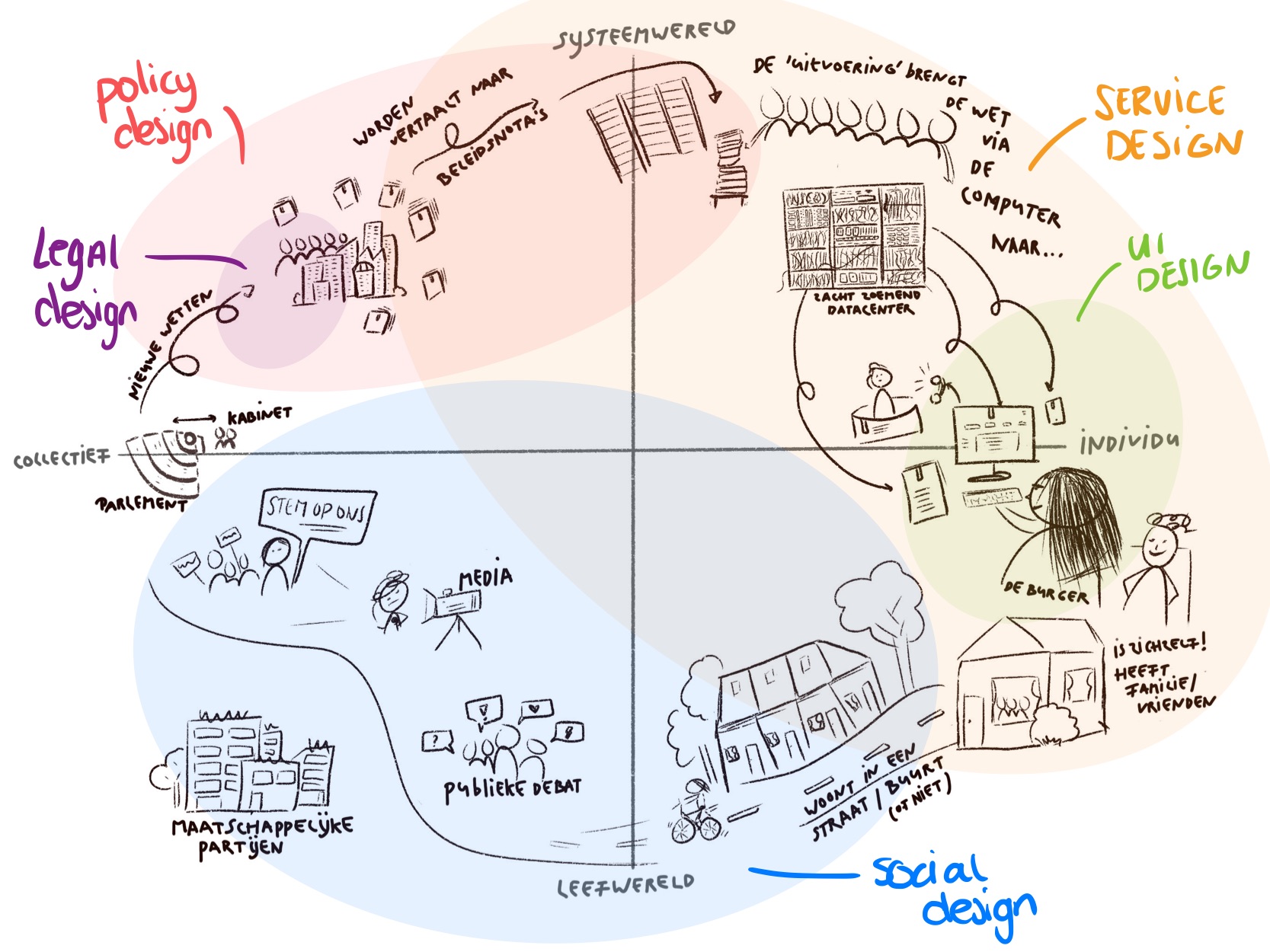
Social design on the lower left, policy design of course at the policy side, with an additional zoom in for legal design. On the right, of course, UI design. And that doesn’t even include all kinds of other types .. content design, design thinking, systems design, graphic design, organization design, product design … what else do you have?
Are you a designer, in government? How do you plot yourself? And why? I’d love to hear about it so we can learn together what design in government can look like and what you have to deal with in what place.
References and reading tips
The four orders of design come from Buchanan, Richard. “Wicked problems in design thinking.” Design issues 8.2 (1992): 5-21.
A fine book for understanding the roles of all the players in this cycle is Willink, Tjeenk. “Herman, Thinking Bigger, Doing Smaller.” (2018). Publisher Prometheus, Amsterdam
The poetic “softly buzzing data center” comes from Zouridis, Stavros. “Digital discipline: on ICT, organization, legislation and the automation of dispositions.” (2000).
This page lists all the books and articles I use in my research.
